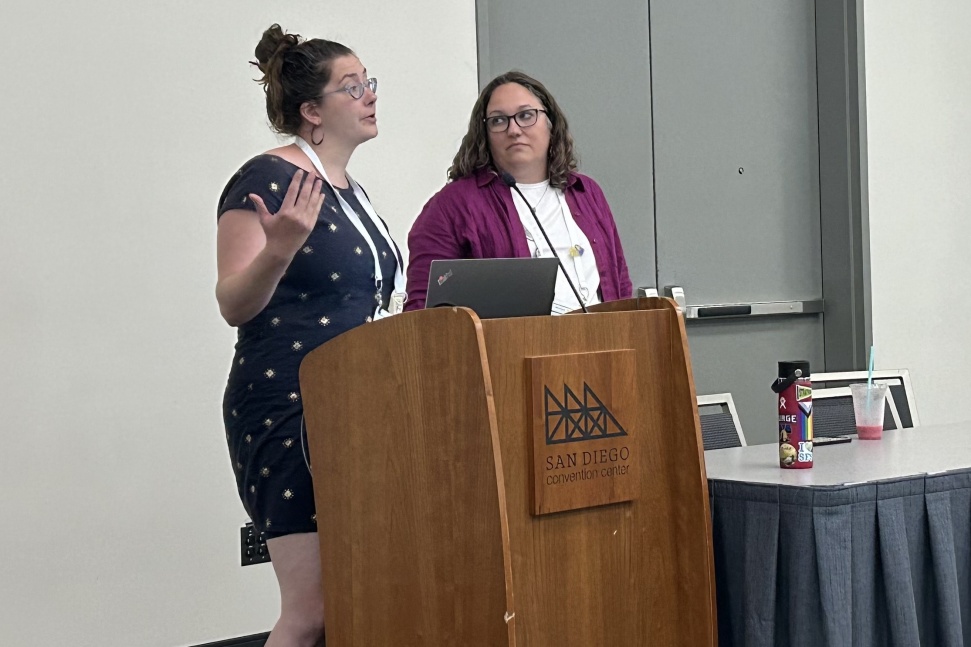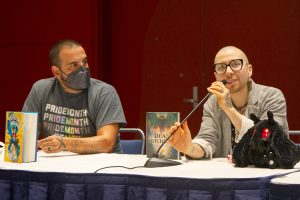
Sexuality education and sex education are not the same. It’s a common misconception among parents, said first grade teacher Sara DeSabato; one that she often debunks in her work cultivating gender and sexuality curriculum for elementary-age students.
“When they think sex education, they think of themselves in middle school where all the girls go into one room, all the boys go into another, and then they learn about completely different things and never talk about it again,” she says. “We want to make it really, really clear that is not what we’re doing.”
“Every single child that comes into our lower school—whether they’re starting in pre-K or fourth grade—they’re bringing their gender, their sexuality, they are bringing their whole selves,” DeSabato continued. “And we want to educate every single part of every single child.”
DeSabato—who teaches at Friends Select School (FSS), a private, Quaker Pre-K–12 school in Philadelphia—and Allison Frick, FSS’ lower school STEAM librarian, presented at the American Library Association’s 2024 Annual Conference and Exhibition in San Diego about their years-long efforts to implement age-appropriate, inclusive lessons on these subjects for kids ages 4 to 10.
A committee of FFS staffers, including DeSabato and Frick, wrote the first version of the curriculum in 2021. Lower grade students have one to two gender and sexuality lessons per month, per grade. Each month, faculty are sent the curriculum subjects for each grade, digital copies of curated book lists, and language to share with families about what students will be learning and why.
Topics include gender expression, knowledge of the body, sexuality and family forming, personal safety, and—for the oldest students—puberty. Associated classroom activities have included a pre-K class drawing themselves as mermaids after reading Jessica Love’s Julián Is a Mermaid and third graders making information charts about what consent is and how it presents itself in various situations. In the library, Frick has helped students make informational posters about the words in the LGBTQIA+ acronym and offered a Keith Haring–inspired art project with students after reading a book about the famed artist.
Over the last several years, Frick said she has prioritized building a diverse collection of fiction and nonfiction materials to complement these initiatives. She noted that an increasing number of newly published books, she said, include clear and inferential queer characters without making that the story’s plot.
“The central conflict of [Kyle Lukoff’s When Aidan Became a Brother] is, “Will I be a good big sibling?” The conflict was not about [Aidan’s] transness,” Frick said. “All of the worries are gentle, little kid worries of the change that comes with a new family member… or in Julián Is a Mermaid, Grandma might be mad that Julián made a mess and wasn’t following good directions. It wasn’t that Julián was wearing a dress.”
As a private school, DeSabato and Frick acknowledged they don’t have the same hurdles that their public school or public library colleagues may face. But they still receive occasional pushback from caregivers. They credit much of the curriculum’s success to open communication with them before and throughout the school year and a supportive administration.
“For every complaint that we get, we get five to six emails from families saying, “Oh my goodness, we’re so appreciative you’re doing this, we’re so glad this can be a safe space for our child who is exploring their gender or already knows they’re trans or nonbinary,’” DeSabato said. “You have to choose the stakeholders that you want, and we’ve been really lucky that the school understands the stakeholders they want are the families whose kids feel safe and protected at the school.”


